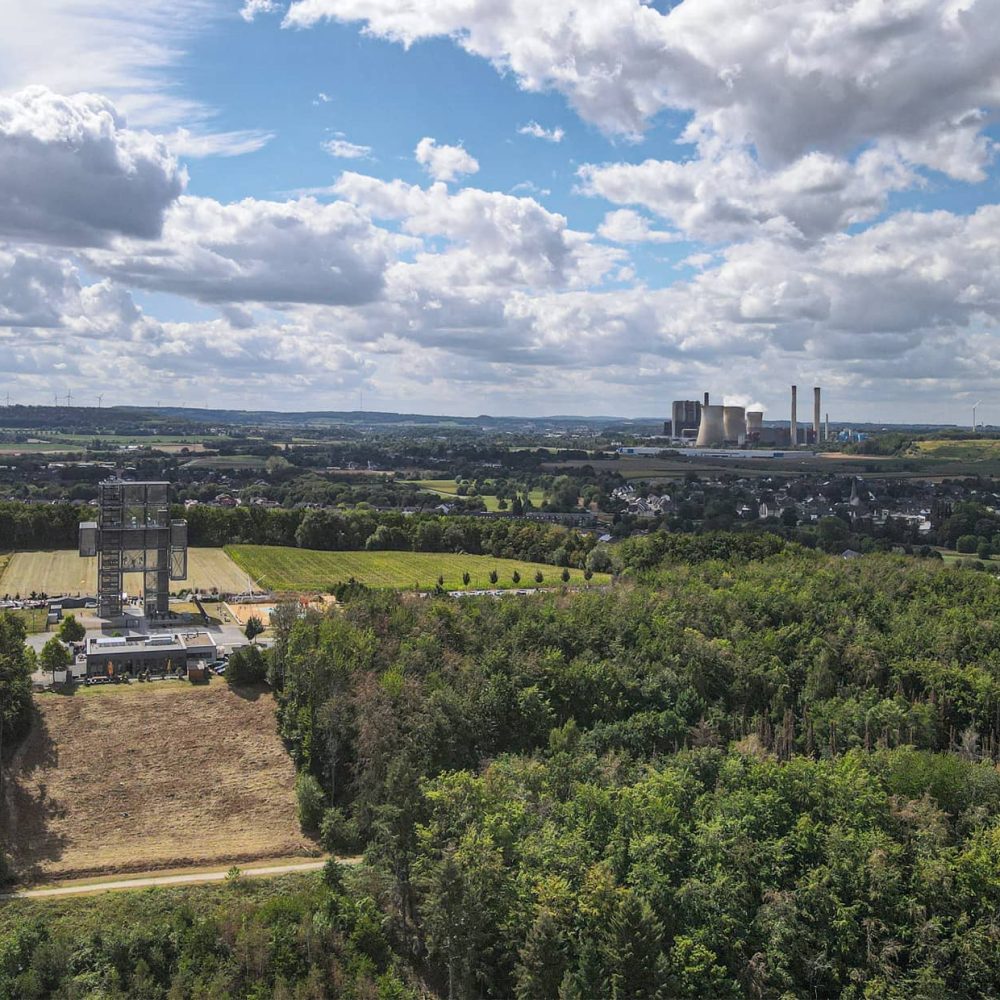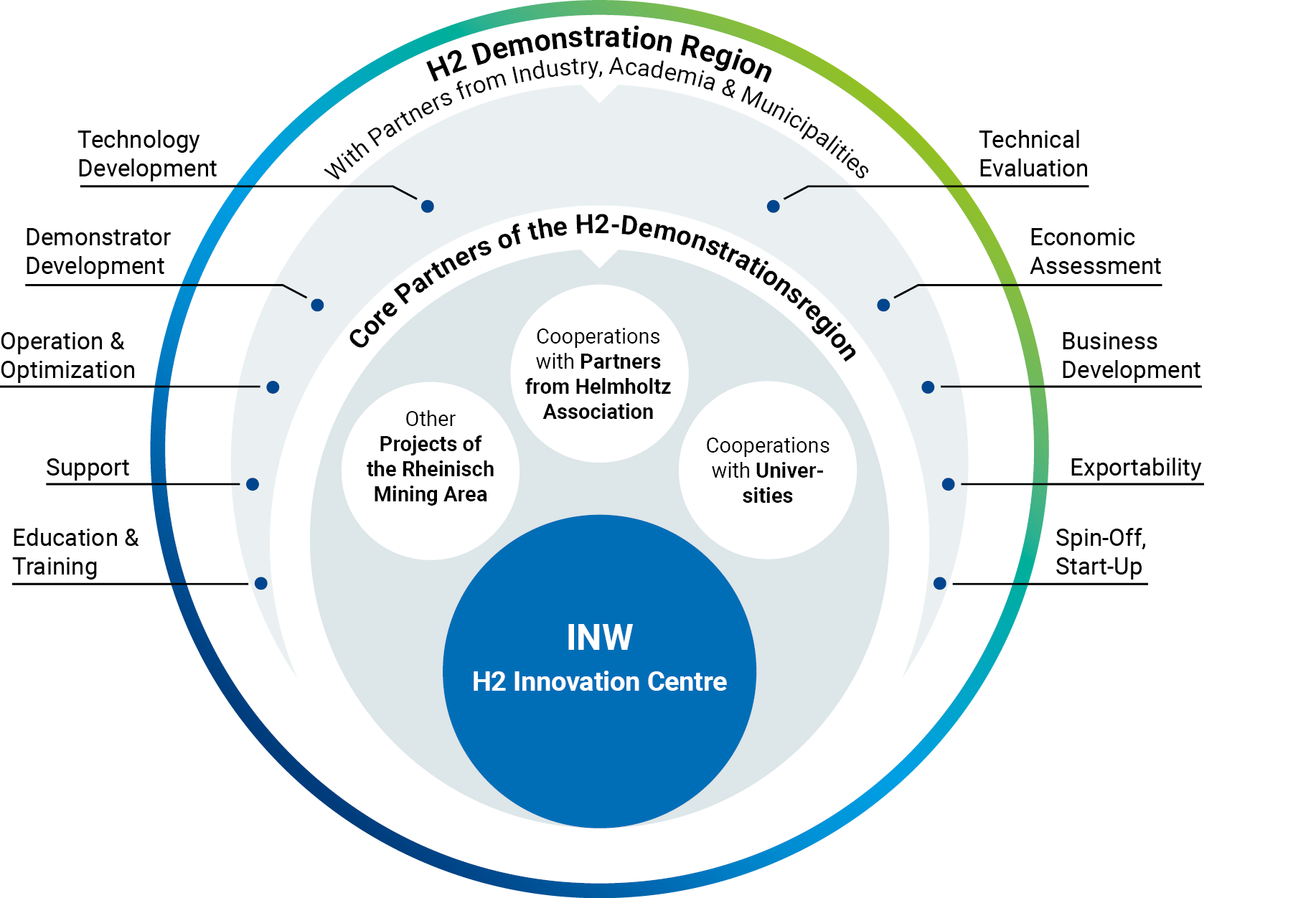
PROFILE
Where do we come from?
‘Establishment of a Helmholtz Cluster for a sustainable and infrastructure-compatible hydrogen economy at Forschungszentrum Jülich, including the development of research utilisation chains’
This is what it says in Germany’s “Structural Strengthening Act for Coal Regions” which was passed in 2020. The aim of the Structural Strengthening Act is to create new jobs in future-oriented and climate-friendly industry sectors in an area where jobs are being lost because Germany is phasing out lignite as an energy source. That is exactly what we want to achieve in the middle of the Rhenish mining area, the largest of the five lignite mining areas in Germany.
The Federal Ministry of Education and Research and the state of North Rhine-Westphalia are funding the Helmholtz Cluster for a Sustainable and Infrastructure-Compatible Hydrogen Economy (HC-H2) with a total of 860 million euros until 2038. The €860 million will be distributed over the coming years until 2038 and will be used to establish both the Institute for a Sustainable Hydrogen Economy (INW) at Forschungszentrum Jülich and HC-H2. The INW is currently being established and will consist of four institute divisions. The divisions will focus on the different development stages of new technologies, starting with basic research at atomic and molecular level, through laboratory scale to the operational system.
The funding will also be used to support the demonstration projects that are planned throughout the Rhenish mining area. The cooperation between the INW and partners from research, industry and business takes place under the umbrella of HC-H2. Here, the partners want to show on an industrial scale that the new innovative hydrogen technologies make the hoped-for contribution to climate protection and are economically lucrative at the same time. The construction and operation of the demonstration projects should create new jobs. This is the second major purpose of the funding. With the successful demonstration projects, the Rhenish mining district is to become a globally visible beacon, with technologies that will subsequently make a contribution to the climate-friendly energy economy of the future all over the world.
The first multi-SOFC project in Erkelenz has been launched and further projects are on the horizon.

INW and HC-H2
What is what?
The Institute for Sustainable Hydrogen Economy (INW) at Forschungszentrum Jülich forms the core of HC-H2. It is the youngest institute at the research centre and is currently under construction. In contrast to the other institutes, it is not being built on the campus of the research centre, but in the Brainergy Park in Jülich, an inter-municipal and innovative business park. The location reflects Forschungszentrum Jülich’s self-image of playing an important role in the midst of structural change.
Basic research on the topic of the hydrogen economy is carried out at the INW. At the same time, cooperation with partners from research, universities, industry and business is coordinated from here. The HC-H2 summarises the cooperation between the INW and project partners from science, education and industry. The aim of the HC-H2 is to bring new and innovative hydrogen technologies into application with the help of the partners. We are working to ensure that new jobs are created in the wake of the HC-H2, that companies settle in the Rhineland region, that start-ups or spin-offs are created and that they work with us towards the major goal of making hydrogen a major energy source of the future.